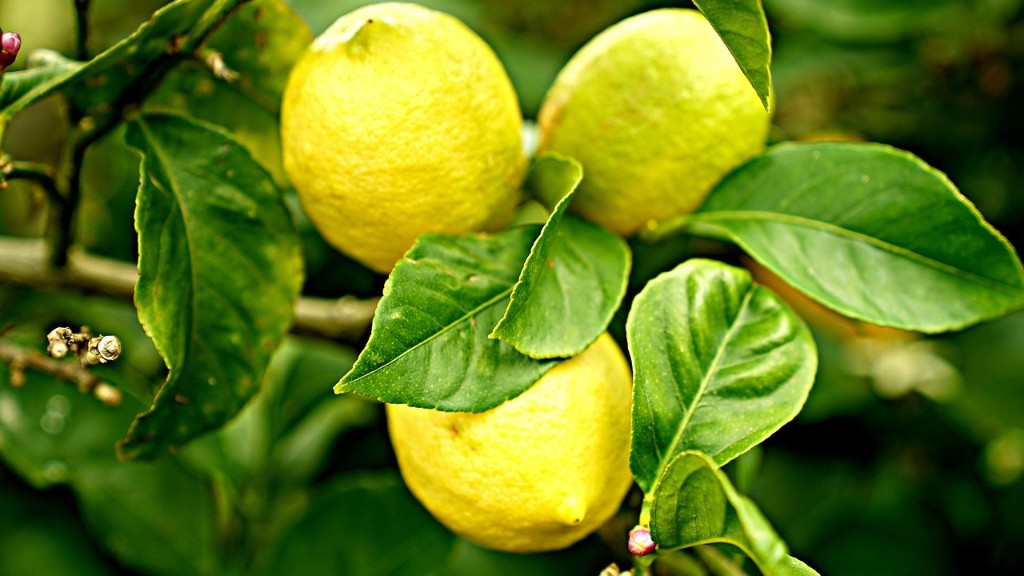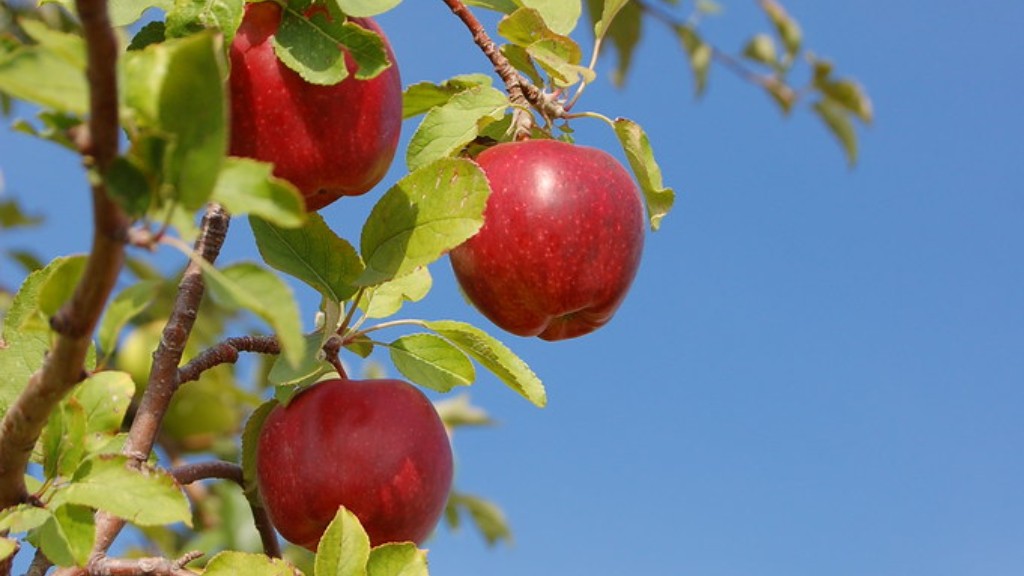If you are looking for a tropical landscaping tree, the pineapple palm tree is a popular choice. A pineapple palm is a large, broad-leafed palm that grows in U.S. Department of Agriculture plant hardiness zones 8 through 11. As with any palm tree, you will need to trim your pineapple palm tree periodically to keep it looking neat and keep it in top condition. To trim a pineapple palm tree correctly, you need the right tools and some safety precautions.
One By One Pruning
The most common type of trimming technique for a pineapple palm tree is one-by-one pruning. Using this method, you will prune off an individual frond, or leaf, at a time. This will help to keep the balanced look of the tree and prevent an overly aggressive pruning that would cause it to lose its aesthetic value. To begin, you will need to select the frond that you would like to prune. It should be located at the outside of the canopy and just above the pruning point. With your hands, gently pull the frond away from the tree and cut it off with a pair of sharp pruning shears.
Once the frond is removed, you can inspect the pruning point, located on the stem just below the frond. If there are any dead fronds or flower stalks attached, cut them off and discard them. Use the pruning shears to remove any remaining fronds that may have died previously. Inspect the stem closely, as any dark knots or lesions can indicate a fungal infection or insect damage. Removing the frond will help reduce the spread of the disease and improve the health of the tree.
Foliage Removal
Foliage removal is another type of trimming for a pineapple palm. This technique will require more of an approach to keep the tree in balance and to prevent over-pruning. To start, inspect the canopy of the tree from all angles and check for any dead or dying fronds. If there are any, prune them and discard them. If the underside of the canopy is congested, you can use hedging shears to remove any dead flowers or leaflets. If this is not an issue, use the pruning shears to prune off any palmate leaves that are not healthy or aesthetically pleasing.
Once the underside of the canopy has been trimmed, you should move to the top of the tree. Use the pruning shears to prune off any fronds that are overgrown or drooping over other sections of the canopy. This will help keep the tree looking neat and balanced. As a last step, prune any fruit that is not ripe as this will help improve the quality and flavor of the fruit produced by the pineapple palm.
Maintenance Tips
To ensure that your pineapple palm tree stays healthy and in good condition, practice proper maintenance techniques. After trimming, use a fungicide to treat the pruning wounds and prevent the spread of fungal infection. If the leaves are heavily infested with scales or other pests, treat them with an insecticidal soap to reduce their populations. During the growing season, water the pineapple palm regularly to keep the soil moist but not overly wet. This will help ensure that the tree looks healthy and puts out new fronds.
Fertilizing the tree with a balanced fertilizer will help improve the overall health and vigor of the plant. Spread the fertilizer evenly around the base of the tree, avoiding contact with the trunk. If your tree is showing signs of potassium or magnesium deficiency, you may want to consider supplementing its diet with a specific nutrient mix. This will help improve the vitality of the tree, as well as its fruiting performance.
Safety Tips
Gardening work can be dangerous, and trimming a pineapple palm tree requires some safety precautions. Always wear protective clothing and eyewear when trimming a tree. This will help to protect your eyes, face and hands from any debris or sharp edges. Avoid using power tools such as chainsaws or pole pruners, as they can easily cause injury. If you are working at a height, use a stable ladder and have someone else present to help you.
When trimming, avoid removing too much at once. This can cause the tree to become top-heavy and cause problems for the stability of the tree. Finally, be mindful of nearby power lines or other structures, as removing the wrong fronds can damage the power lines or cause the tree to crash into the structure. With these tips in mind, trimming a pineapple palm tree is a relatively easy and safe task.
Pruning to Shape
Choosing a specialized pruning technique is another way to shape a pineapple palm tree. This can be beneficial as it allows you to customize the overall look of the tree and can also help to improve fruiting performance. To prune to shape, select a few central fronds and plan the overall shape that you would like to create. You can then use hedging shears or pruning shears to carefully remove the fronds that you wish to prune, shaping the tree as you go along.
Be sure to leave some interior fronds intact as this will help to provide support to the tree and prevent it from becoming top-heavy. Once the desired shape has been achieved, use the pruning shears to remove any asymmetrical fronds that esthetically don’t fit in with the shape. As with any pruning technique, avoid removing too many fronds at once, as this will cause the tree to become unbalanced and top-heavy.
Tips for Fruiting
If you are looking to improve fruit production from your pineapple palm tree, there are a few simple pruning techniques you can try. First, be sure to prune any excess flower stalks as this will help reduce competition between the existing fruits and the developing flowers. Next, thin out any clusters of fruit that form, allowing more light into the canopy. Also, prune away any flowers that are not in the perfect fruiting position, as this will improve the quality of the fruit once they mature.
In addition to pruning, it is important to monitor the health of your pineapple palm tree. If the tree is showing signs of disease or insect damage, act promptly to treat the issue and ensure that the tree remains in a healthy condition. With the right pruning techniques and maintenance practices, you can ensure that your pineapple palm tree remains healthy and produces high-quality fruit.
Fertilizing
Fertilizing is an important step in maintaining the health and vigor of a pineapple palm tree. To do this, you can choose an all-purpose fertilizer that is tailored for palms, or you can create your own fertilizer mix. If creating your own fertilizer mix, choose a fertilizer that is low in nitrogen and high in potassium, sulfur and magnesium. Spread the fertilizer evenly around the base of the tree, avoiding contact with the trunk. For best results, fertilize your pineapple palm tree once every six to eight weeks during the growing season.
In addition to fertilization, you can use compost or manure to improve the overall health of the soil. Adding organic matter will help to improve the soil’s nutrient profile and will provide valuable minerals to the roots of the pineapple palm. It is a good idea to mix the compost or manure into the top 6-8″ of soil evenly and don’t forget to water the tree after you have fertilized it.
Re-Potting
Re-potting a pineapple palm tree is an important process that is usually done every few years. This will help to keep the tree healthy and vibrant, and will ensure that the tree is able to access all the nutrients it needs for growth. Before re-potting, it is important to choose a new pot that is slightly larger than the current one. Be sure to use a potting mix that is well-drained and that has good aeration. It is also important to use organic matter such as compost to improve the soil’s nutritional profile.
To re-pot the pineapple palm, start by gently removing it from its current pot. Carefully remove as much soil as possible and seek out any remaining roots. Inspect the root system and prune away any dead, diseased or damaged roots. Place the pineapple palm root ball into the new pot and fill with potting soil. Tap down the soil gently and water the tree thoroughly. Be careful not to over-water, as this can cause the roots to rot. For best results, re-pot your pineapple palm tree every two to three years.




